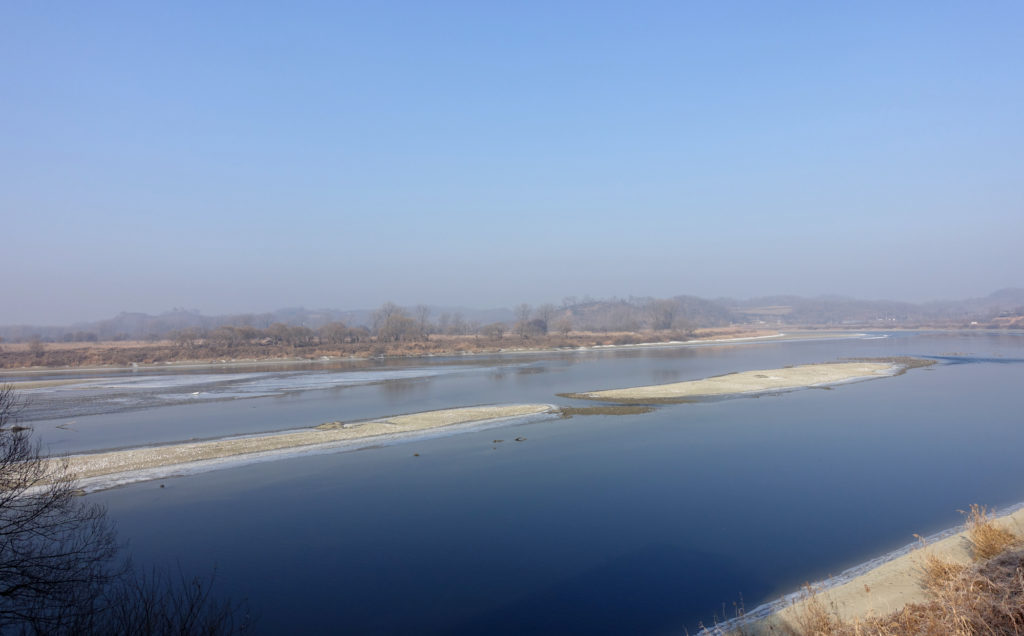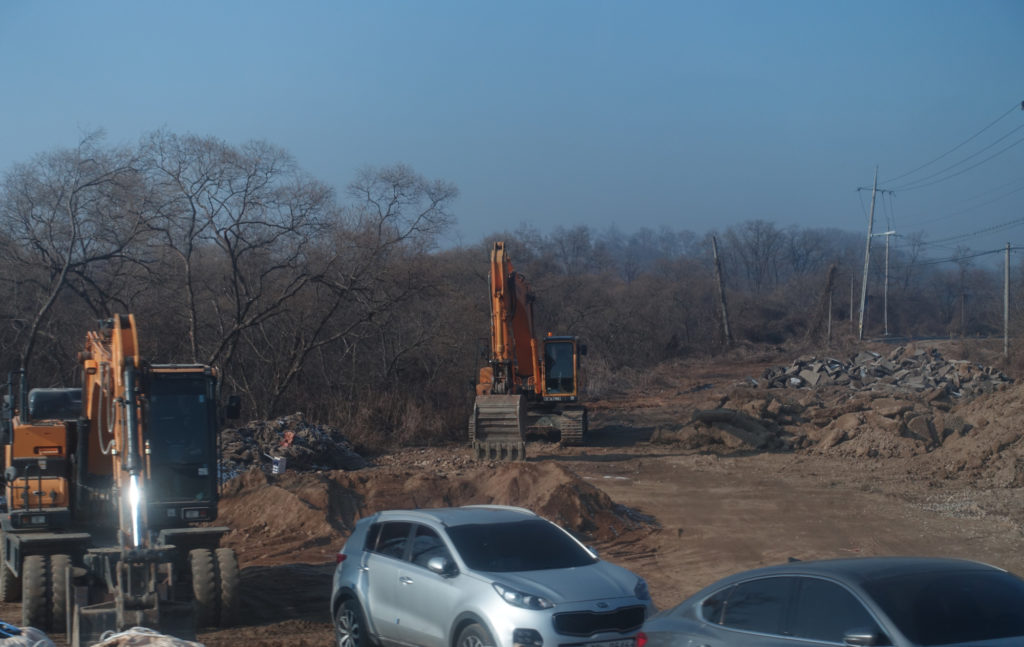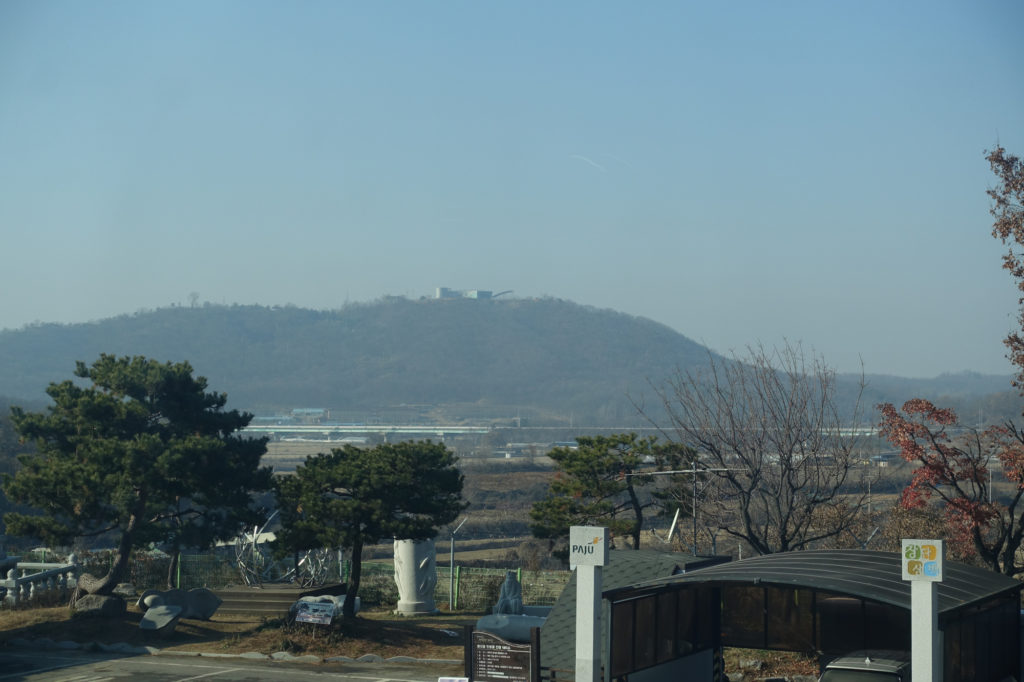Dr Nial Moores, Birds Korea, December 22nd 2019
Our members and readers of this blog will likely already be familiar with the conservation importance of the DMZ and adjacent Civilian Control Zone (CCZ); and also Birds Korea’s position on some of the steps that we consider now need to be taken to help conserve internationally-important biodiversity close to the inner border of Korea (e.g. as laid out here). In short, we argue that essential steps include a moratorium on development proposals within the DMZ, and a much greater focus on supporting farmers within the CCZ to purchase and manage land and water ever-more sustainably – for better livelihoods, for richer biodiversity and as part of a national strategy to avert the worst of climate change. We continue to argue that the resultant conservation approaches and management strategies – a local and national response to the demands of the Sustainable Development Goals – could then be shared with the DPRK as part of confidence-building measures, essential to winning and maintaining the peace and genuinely green diplomacy.
As such, it was therefore wonderful to be invited by KFEM’s / Friend of the Earth Korea’s Deputy Secretary-General Kim Choony and colleagues to involve in two days of site visits and meetings. These included visiting the Odusan Observatory and the CCZ in Paju (including the new Dora Observatory, where long range views of circling raptors over DPRK territory included five Cinereous Vulture and a single Eastern Imperial Eagle – perhaps the first DPRK record since one seen by Jurgen Fiebig back in 1989); the CCZ in Yeoncheon, including the Typhoon Observatory, on December 8th; and the Cheorwon CCZ on 9th (and again on 17th with conservation photographer Bjorn Olesen), where an evening flight of cranes on the first date included at least 2,200 White-naped and 150 Red-crowned Cranes, coming into roost in a near-empty Donsong Reservoir below the new Observatory there.



These site visits were organized as part of a monthly series of meetings between national environmental groups (including KFEM) and local farmers and organisations. They were timed to benefit from a visit to the Republic of Korea (ROK) by Professor Kai Frobel, one of the very first people to call for the conservation of a narrow strip of land that once formed the inner border between West and East Germany, which is now effectively managed as the World’s longest nature reserve – the German Green Belt (or “Green Ribbon”). As Senior Policy Advisor on the Green Belt for the 640,000-member strong BUND (the German partner to Friends of the Earth), Professor Frobel’s presentation shone light on the German experience, and encouraged everyone to work together for the development of a shared vision and plan for the inner border area of Korea. In recognition of its outstanding global importance, he argued that the majority of the Korean DMZ should be conserved for nature and natural processes, with even many of the landmarks of war – like fences and guard posts – left standing post-reunification, to help remind future generations of the pain of division.
My own presentation was focused more explicitly on the need to embrace the Sustainable Development Goals here on the Korean Peninsula, both to conserve biodiversity and to help overcome the wide social, economic and political disparities that currently exist between the ROK and the DPRK. By way of example: in one of the two nations, billions of won have been spent in the past few years on species restoration/ introduction, building wide roads through former farmland near the inner border and on constructing high-tech Jurassic Park-type observatories built to look out, down on and over their neighbour. In the other nation, each square meter of arable land is harvested intensively, often by hand; people have only firewood collected from the surrounding hills to stave off the brutal cold of winter; but at least in some areas, efforts are already being made to improve the livelihoods of farmers and fisherfolk who live in internationally important wetlands. Our view: some of these gaps will need to be closed if peaceful reunification and the conservation of the natural values of the DMZ are to be achieved.



In addition to the formal presentations, the site visits and insights shared by all of the participants provided a wonderful opportunity to learn more both about the challenges and some of the progress already being made in much of the CCZ.
For example, in Paju, the local office of KFEM has made concerted conservation efforts for biodiversity conservation, including with local farmers, even while challenging a wide range of large-scale development projects.



A little to the north in Yeoncheon, regular crane surveys are conducted by dedicated conservationists like Mr Baek Seung Kwang and his colleagues, and large areas have recently been designated as the Yeoncheon Imjin Biosphere Reserve and as a Geopark.



In Cheorwon, a new educational crane centre has been developed, and some sections of rice-field have recently been screened by the local Crane Protection Association to reduce disturbance to foraging birds.



At the same time, our visit to the newly-constructed huts overlooking a former crane roost in the Hantan River just outside of the Cheorwon CCZ again failed to find any cranes. With a few design changes, however, even this now-degraded site could help with conservation efforts (e.g. including creating a much more natural-looking landscape in the currently huge car park; replacing concrete walkways with woven floor mats; removing excessive signage, including neon, replacing it with much stricter information on being quiet; increasing the height of screens between buildings; making viewing slats much smaller; planting screening vegetation below and to the sides of each viewing building).


Personally and on behalf of Birds Korea, I would like to finish by repeating my thanks to Ms Kim Choony for the invitation to participate; to Mr Park Gyeong Man from the Hangyoreh (for his wonderful company, driving and sincere reporting); colleagues in Paju KFEM and Paju City officials; to Ms Yoon Misook, Mr Baek Seung Kwang and Dr Kim Daewoo and their colleagues in Yeoncheon County; Executive Director Baek Jong-Han in Cheorwon; to all presenters and participants; and to conservation photographer Bjorn Olesen (about which, more will soon be posted).

